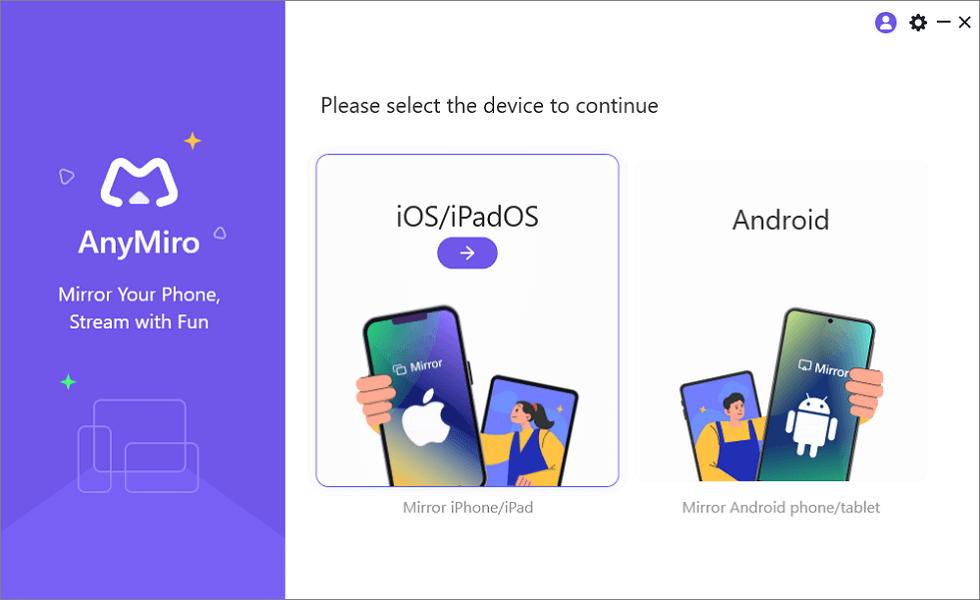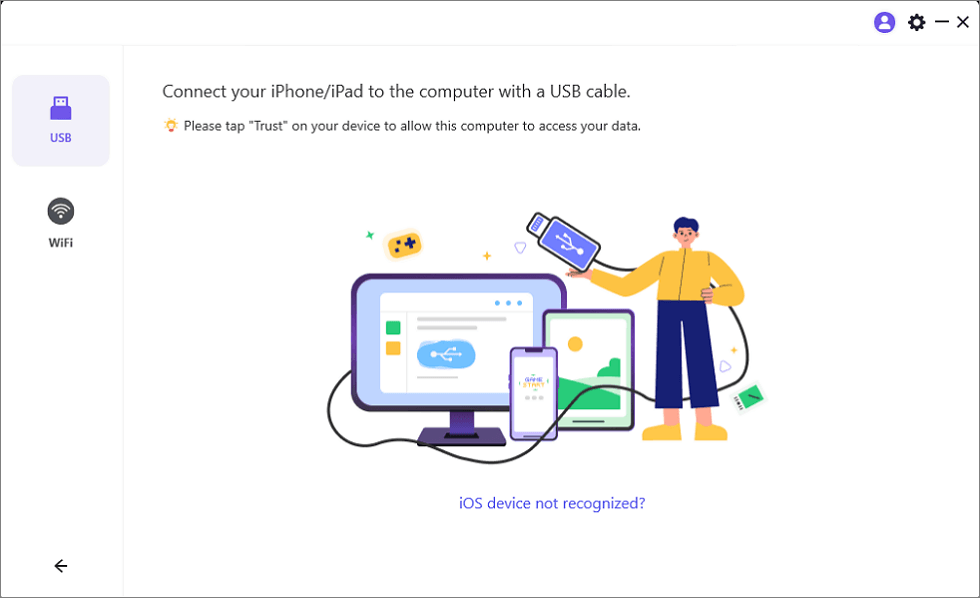Solutions & Alternative: Why is AirPlay Laggy?
AirPlay is mainly used to enjoy the benefits of wireless projection. However, do you often encounter the problem why is AirPlay laggy? We will introduce the reasons for AirPlay lag and slowness, as well as some solutions. Don’t miss out!
Solutions & Alternative: Why is AirPlay Laggy?
Screen mirroring your iPhone and Android to the computer with ease.
- Fast response time within 10 ms and 60fps frame rate.
- A stunning visual experience with no color difference.
- Lag-free screen mirroring and 4k resolution.
Available for both Win & Mac
AirPlay is a wireless transmission technology, aiming to provide wireless media streaming and screen mirroring experiences. It enables users to project multimedia content such as audio, video, and photos from iOS devices (such as iPhone, iPad) or Mac computers to other compatible devices like TVs.
The reason AirPlay has become one of the most popular screen mirroring tools is primarily due to its seamless integration within the Apple ecosystem, user-friendly design, high-quality streaming, reliability, versatility, third-party support, media sharing capabilities, continuous improvement, and the brand recognition and trust associated with Apple.
Have you ever encountered issues of lag and slowdown while using AirPlay? If you’re curious about the reasons for “why is AirPlay laggy”, please continue reading.
Table of ContentsHide
Why is My AirPlay Lagging?
Why is my AirPlay lagging? I believe many people have had this question. Don’t worry, we’ve listed several possibilities here to explain why my AirPlay keeps disconnecting.
1. Wireless Data Transmission: AirPlay uses a wireless network for data transmission, involving steps like encoding, transmission, decoding, and more. Each of these steps takes some time, leading to a certain amount of delay.
2. Processing Time: Encoding content from the source device, transmitting it to the target device, and decoding it involves multiple processing steps. Each of these processes takes time, leading to delays in screen mirroring.
3. Network Quality: Network quality is a crucial factor affecting AirPlay laggy. An unstable network, congestion, or insufficient bandwidth can slow down data transmission speed, resulting in delays.
4. Device Performance: The performance of both the source and target devices used can impact AirPlay delay. Lower-performing devices may struggle to quickly process data, leading to delays in screen mirroring.
5. Distance from Router: The distance between the devices and the wireless router can affect signal strength, potentially impacting the speed and stability of data transmission.
How to Fix AirPlay Laggy Problem
As mentioned earlier, the reasons behind AirPlay lag are multifaceted, involving factors such as wireless data transmission, network quality, device performance, and settings. Once we understand why is my AirPlay lagging, how can we go about addressing this issue? Here, we also provide you with several methods to resolve the question of why is AirPlay laggy. You can refer to the following approaches for troubleshooting:
1. Restart the Router or Improve WiFi Signal
You can try restarting your wireless router to refresh the network connection and ensure that your iOS device or Mac is within a reasonable range of the router to obtain a strong WiFi signal. Remember to minimize physical obstacles and interference between devices and the router.
2. Disable VPN or Firewalls
Temporarily disable any Virtual Private Network (VPN) that might be affecting network performance. Also, check if any firewall or security settings are blocking AirPlay traffic, and temporarily disable them for testing.
3. Update Software
Keep the software and firmware of your iOS device, Mac computer, and compatible AirPlay devices up to date with the latest versions. These updates often include bug fixes and performance enhancements.
4. Adjust Quality Settings
During AirPlay, lower the resolution or quality settings of video and audio streaming. Lowering the settings can reduce data load and help alleviate latency.
5. Prioritize AirPlay Traffic
Some routers allow you to prioritize specific types of network traffic. Prioritizing AirPlay traffic can ensure smoother data transmission.
6. Close Background Apps
Close unnecessary apps running in the background on your iOS device or Mac to free up processing power and network resources.
7. Restart Devices
Restart your iOS device, Mac, and any AirPlay-compatible devices to refresh connections and eliminate potential issues.
WiFi vs USB: Which One is More Stable Screen Mirroring Method?
From the previous section, we can know that the primary reason why is AirPlay laggy is indeed due to poor Wi-Fi signal. This is because AirPlay’s data transmission occurs over wireless networks, and the strength and stability of the Wi-Fi signal directly impact the speed and quality of data transmission, leading to latency and buffering issues. Hence, there are times when we feel frustrated, wondering, “Why does my AirPlay keep disconnecting again?”
Compared to the instability of Wi-Fi connections, using a USB cable for screen mirroring tends to be more stable. The relative stability of using a USB cable for screen mirroring primarily stems from the physical connection and performance advantages of data transmission. This physical connection offers higher stability, reducing the likelihood of interference or signal attenuation.
Moreover, USB cables support high-speed data transmission standards, such as USB 3.0 or USB 3.1, with larger bandwidth and faster transfer speeds. This enables screen content to be transmitted more quickly from the source device to the target device, thereby reducing transfer latency.
AirPlay Alternative: Screen Mirror iPhone to Computer with Ease
Since using a USB cable for screen mirroring is more stable, is there a better way to use a USB cable instead of AirPlay for mirroring an iPhone’s screen? Here, we highly recommend a software called AnyMiro for mirroring your iOS screen on your iPhone.
AnyMiro is a desktop software that allows you to mirror your phone’s screen to your computer. It ensures a stable connection and can maintain a stable connection for as long as 10 hours or more. Furthermore, it does not compromise the quality of the mirrored screen, presenting a stunning display just like the original.
AnyMiro stands out in the market due to its key features and advantages:
- Ensures a stable mirroring connection, allowing uninterrupted screen mirroring for extended periods, up to 10 hours, during activities like mobile gaming or drawing streams.
- AnyMiro raises the bar with its support for resolutions of up to 4K.
- Lag-Free Gameplay Mirroring: The prospect of mirroring gameplay without any perceptible delay is a sought-after feature, and AnyMiro delivers on this front.
So, let’s go through the steps together on how to use AnyMiro to address the issue of “Why is AirPlay laggy”:
Step 1. Download and install AnyMiro on your Windows or Mac computer.
Free Download for all windows & 100% safe Free Download for all mac & 100% safe
Free Download100% Clean & Safe
Step 2. On AnyMiro’s homepage, select the “iOS/iPadOS ” option, then click “Next” to proceed.

Mirror iPhone to Computer
Step 3. Both WiFi and USB screen mirroring are available with AnyMiro, select either screen mirroring method you want. Here we take screen mirroring via USB as an example.

Mirror iOS Device to Computer via USB
Step 4. Tap “Trust” on your iPhone, and wait a few seconds, you can see the iPhone screen on the computer.

Trust Your Computer on iPhone
Why is AirPlay Not Working on Roku?
AirPlay not working on Roku can be attributed to several reasons. Some of the common issues and their possible solutions include:
1. Compatibility: Make sure your Roku device and iOS device support AirPlay. Not all Roku models support AirPlay, so ensure you have a compatible device.
2. Network Connectivity: Both your Roku and iOS device should be connected to the same Wi-Fi network. Check if both devices are on the same network and try restarting your router if needed.
3. Firmware Updates: Ensure your Roku device has the latest firmware update installed. Outdated software can sometimes cause compatibility issues with AirPlay.
4. Firewall or Security Settings: Check if any firewall or security settings on your router are blocking AirPlay. Temporarily disabling these settings for testing purposes may help troubleshoot the issue.
5. AirPlay Settings on Roku: On your Roku device, go to “Settings” > “Apple AirPlay and HomeKit” and ensure that “AirPlay” is set to “Always Allow.”
6. Restart Devices: Try restarting both your Roku device and your iOS device to refresh their connections.
The Bottom Line
The above information covers the entirety of why is AirPlay laggy. We’ve presented potential causes and solutions that you can try as references.
Furthermore, we strongly recommend considering the use of AnyMiro as an alternative to AirPlay for screen mirroring and game streaming. With AnyMiro, you can enjoy a stable connection lasting up to ten hours, and it enables you to seamlessly stream to major streaming platforms like YouTube and Twitch. Say goodbye to worries about delays and buffering when screen mirroring. Don’t miss out on AnyMiro – download it now and give it a try.
AnyMiro – Real-Time Screen Mirroring Tool
Free download AnyMiro to enjoy a fast, stable, and smooth screen mirroring experience. You can mirror for better game playing, video watching, or live streaming mobile phone content.
Product-related questions? Contact Our Support Team to Get Quick Solution >

